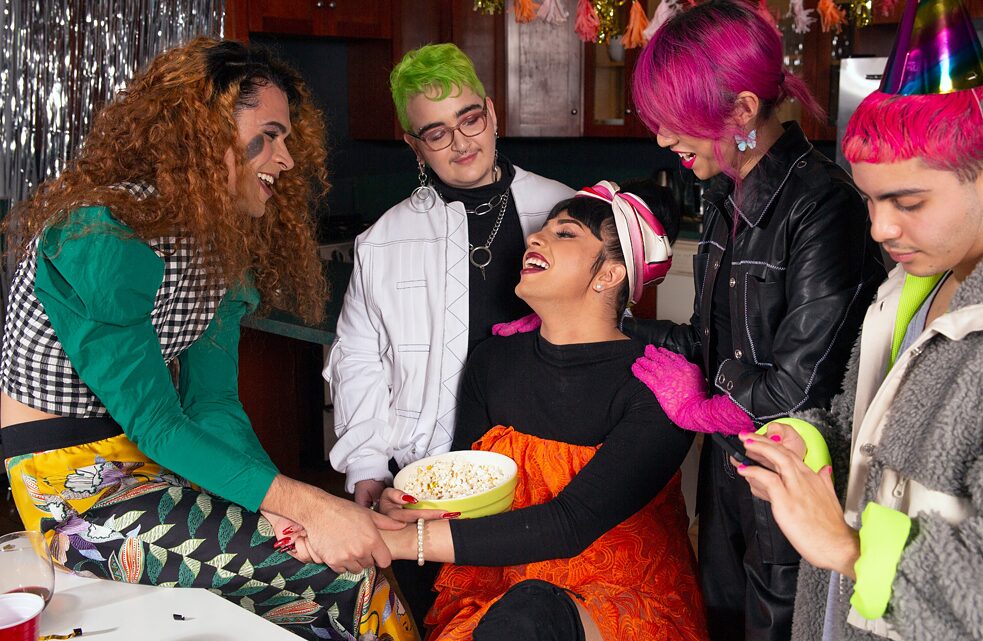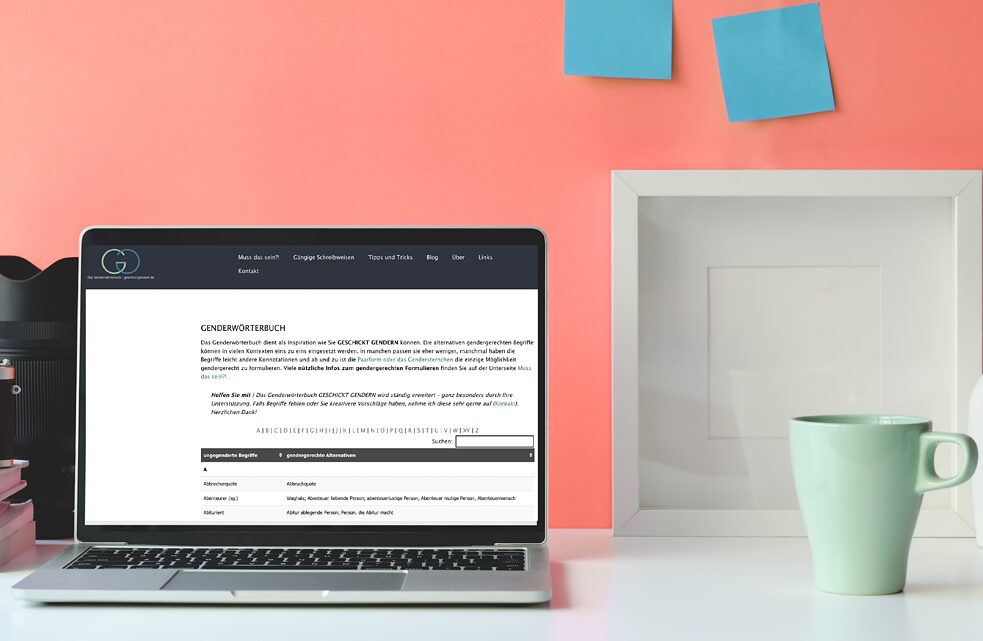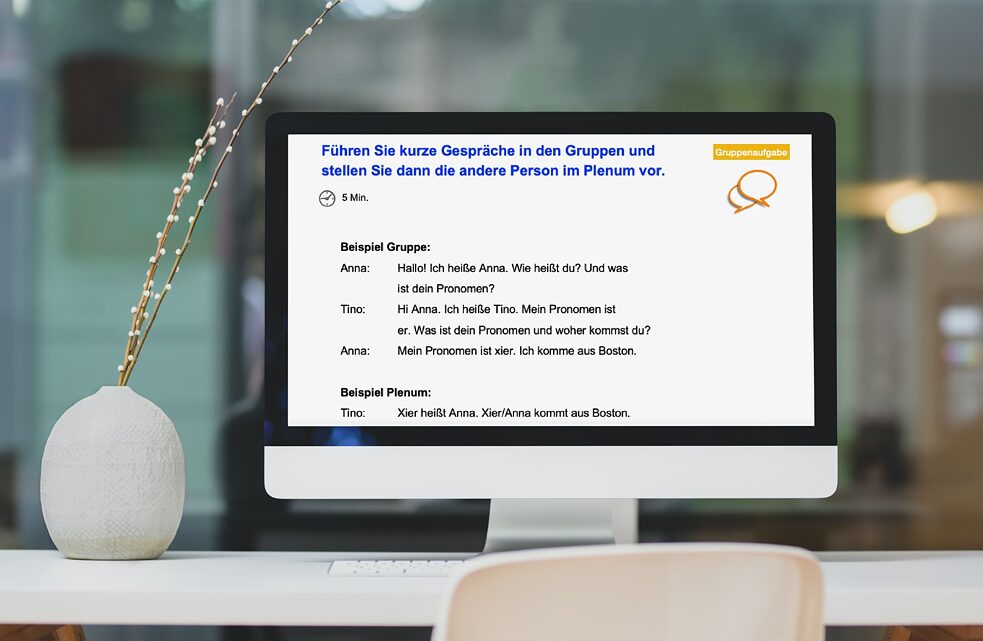Languages, and therefore language learning, are closely linked to identity. Even in language classes for beginners, pupils talk about themselves, their experiences and their relationships. How can you help your pupils express non-binary gender identities?
Why do we need gender-inclusive language in German lessons?
Not all language learners identify with either of the binary categories "male" or "female". Rather, gender should be understood as a broad spectrum of social identities. But how can this spectrum be reflected in German? Above and beyond the official norms of German usage, there are a number of more gender-inclusive ways of using the language. Teachers can make a contribution to efforts to raise gender-consciousness in society by drawing their pupils’ attention to gender-inclusive language.
Gender markers
Language learning necessarily involves using nouns that refer to people. The German language traditionally adheres to a binary male/female gender construct. Lately, however, German has introduced a number of new gender markers. The introduction of the so-called
Binnen-I (medial capital I) as in
LehrerIn (teacher, both male and female), is one attempt to replace the generic masculine for professions in German with a gender-inclusive form. But even this spelling conforms to gender binarism. Two more inclusive alternatives are the underscored so-called
Gender-Gap (e.g.
Student_in) and
Gendersternchen (“gender star”) (e.g.
Student*in). Both the underscored space and the asterisk stand for the whole spectrum of gender identities. So we can make language-learning exercises in the classroom more inclusive by using either form, the “gender star” or “gender gap”.
Another way of visually conveying inclusion is to use gender-neutral or inclusive images. There are plenty of inclusive stock photo databases to choose from online, including the
Disabled And Here Collection and the
Gender Spectrum Collection.
 Friends at a party
| © The Gender Spectrum Collection
Friends at a party
| © The Gender Spectrum Collection
Gender-neutral alternatives
The “gender star” and “gender gap” make it easy to create gender-inclusive variants of nouns, e.g. to turn
Freund (male friend) and
Freundin (female friend) into
Freund*in (friend, including male, female and everything in between). But this practice gives rise to some linguistic challenges for learners (and even teachers) because certain grammatical information may get lost in the process. If you write “
Ich sehe eine*n Köch*in” (“I see a cook”), it isn’t clear to German learners that the masculine singular form is
Koch and not
Köch. This problem can be avoided by teaching gender-neutral forms, such as
Studierende (student) or
Lernende (learner). If there isn’t any gender-neutral alternative for a noun in common usage, show your pupils how to avoid binary constructions by using the German language creatively: e.g. simply expand “
der*die Teilnehmer*in” (the participant) into “
die teilnehmende Person“ (the participating person), or replace “
der*die Chefin” (boss) with “
die Führungskraft” (manager).
Exercises in forming gender-neutral variants
Give your class a list of three or four nouns: e.g. der*die Sänger*in, der*die Arbeiter*in, der*die Fensterreiniger*in (singer, worker, window cleaner). Have them change these “gender-starred” forms into gender-neutral variants. So “der*die Sänger*in“ (singer) becomes “die singende Person” (the person singing), the “der*die Fensterreiniger*in” (window cleaner) becomes “die Fensterreinigungskraft” (window-cleaning worker). Beginners can be assigned a research exercise that involves looking up gender-neutral alternatives for selected nouns e.g. on the website
https://geschicktgendern.de/.
 Research in a digital gender dictionary
| © Dr. Steffen Kaupp
Research in a digital gender dictionary
| © Dr. Steffen Kaupp
Gender-inclusive personal pronouns
Needless to say, gender-inclusive instruction doesn’t stop at nouns. Starting with the neologism
xier, a whole set of non-binary third-person pronouns coined by the German trans community is also catching on. You’ll find detailed instructions on how to use these personal pronouns on Illi Anna Heger's website (
see link below). As with gender-neutral nouns, the main thing is to raise learners’ awareness of these pronouns, so they don’t have to be covered in detail and discussed at great length. You can address the issue of pronoun choice by simply asking, for example, "What is
your pronoun?" when pupils are introducing themselves. This will encourage active use of gender-inclusiveness. If learners routinely come across gender-neutral nouns and pronouns in authentic instances of language usage, their use will become normalized, which will significantly contribute to the inclusion of non-binary people.
 A gender-inclusive dialogue
| © Dr. Steffen Kaupp
A gender-inclusive dialogue
| © Dr. Steffen Kaupp
But all this stuff isn’t in the dictionary!
A gender-inclusive use of language is closely linked to broader discussions about gender and gender identity. German teachers working in different cultural contexts will have to reconcile local gender conditions and cultural discourse regarding gender with efforts to convey a modern, inclusive image of Germany. Many of these linguistic structures have yet to be officially included in the Duden, the standard German spelling dictionary. Nonetheless, one of our most important tasks as teachers is to create a learning atmosphere in which all learners feel represented. And teaching ways of verbally expressing diverse gender identities is a key step towards achieving gender inclusiveness.
References
- Herrmann, Steffen (2003): “Performing the Gap – Queere Gestalten und geschlechtliche Aneignung”, Arranca!, No. 28, November, pp. 22–26.
- Djavadghazaryans, Angineh. “’Please Don’t Gender Me!’ Strategies for Inclusive Language Instruction in a Gender-Diverse Campus Community”, Diversity and Decolonization in German Studies. Eds. Regine Criser and Ervin Malakaj. New York: Palgrave, 2020. 269–287.
